Well–Planned Support Lets Open Systems Soar
Open control systems can give process applications many benefits. They just need a lot of care and feeding.
Today that means handling many software issues, such as installing Microsoft patches and hot fixes, as well as implementing other IT-related functions to maintain open systems, even if these new responsibilities may seem to be outside of traditional control and automation tasks and jurisdictions.
To help users better coordinate their process applications and open systems, Whit McConnell, PE, senior staff engineer at ExxonMobil Chemicals engineering and manufacturing support department, and Doug Bach, global manager for Honeywell Process Solutions (HPS) contract management services, presented Support PlanningAlign Your Support Strategy with Your Business Strategy, on June 16 at the 2008 Honeywell Users Group (HUG) at the Arizona Biltmore Hotel in Phoenix.
Open systems add a whole new level of complexity, but a lot of users dont have their support strategies defined, said Bach. So when it recently developed its new global support strategy, ExxonMobil made sure everyone knew what equipment it bought from Honeywell and who users could call for help. There were distinctly defined roles about who would do what daily and who should be contacted.
Bach named the main challenges in sustaining automation:
- Keeping solutions up-to-date despite changing hardware and software and having to replace and update nodes;
- Maintaining knowledgeable staffs, which need consistent implementations, troubleshooting and skill-set certification, even as system revisions shift, and configuration management evolves;
- Installing mixed technology and maintaining standards;
- Understanding value in new releases by asking whats included within a release and how moving to a new release will affect installed assets?
- Aligning support strategy with business strategy, which involves bringing all aspects of the business requirements into a support plan, and than asking what tasks are best performed in house and what tasks Honeywell is best-suited to perform?
Open technology has increased system complexity, specialized system tasks and increased dependencies throughout the platform and application life cycle. ExxonMobils Whit McConnell (pictured), together with Honeywells Doug Bach, discussed how process manufacturers can best manage the downside of open systemsin order to take full advantage of their benefits.
For example, Honeywells Services Management program includes introducing new solutions, technologies, applications, hardware and processes; driving change to optimize cost, performance, capacity and availability of the system; executing day-to-day tasks; and resolving incidents, problems and requests quickly.
Wed already looked and had open systems in place for optimization, McConnell said. So even though we already had a DCS, we knew wed have to do this right.
Consequently, McConnell reported that ExxonMobil defined several crucial support features. The firm required that its sites must use standard, consistent installations; must have available and effective remote access and support; must perform upgrades online; and must give immediate attention to high-priority problems. Consequently, Honeywell had to make sure that the Experion systems it provided to ExxonMobil were secure from intrusion or infection, that there would be no operating incidents and that the systems reliability was extremely high. Reliability Level 1 is 99.999% availability, or only minutes per month downtime on average, and Level 2 is near 99.99%. This reliability also required the elimination of loss of view/control incidents to the extent possible.
Though he knew his companys applications needed more open systems, McConnell says ExxonMobil also was well aware of the risks. Open systems technologies can have a positive impact, but they also bring challenges, he said. These include virus and worm attacks, multiple software vendors for OSs and applications, a proliferation of PCs and other hardware performing specialized tasks, hardware that reaches obsolescence quicker than proprietary systems, new skills required for management and support, and an overall technology churn because hardware, OS and application dependencies each have short and unsynchronized life cycles.
Open technology also has increased system complexity, specialized system tasks and increased dependencies throughout the platform and application life cycle. This creates even more dependency on strategy. So rather than resist open technology, ExxonMobil is managing risks carefully and taking advantage of the benefits.
You must have an effective strategy for the care and feeding of these systems. Weve embraced open systems, but weve also made a painstaking effort to manage them right.
Consequently, ExxonMobile worked with Honeywell to tailor the present TPS Support Model to better define roles for direct site, Tier 1 support, global support from ExxonMobil and Tier 2 support from Honeywell.
ExxonMobils support model with Honeywell also includes the following tasks: develop and maintain documentation, establish and maintain standard deliverables, install and configure Experion systems, perform software and hardware upgrades, perform system expansions, implement security patches, perform routine system maintenance, troubleshoot and resolve problems, perform hardware refresh, maintain control and graphics toolkits and provide vendor coordination, business forecasting and communications.
In addition, while some open systems problems are resolved via improved functions, others are fixed by Honeywells services package.
Our support model now maximizes system reliability with site support that provides immediate response to critical issues, close communications with operations and Honeywells services that help resolve problems quickly, said McConnell. We also maximize common solutions by using common approaches, providing single-point contact to other vendors and ExxonMobil Business IT, using standard/secure software load for sites, and having a global service agreement with consistent terms, quarterly meetings and training. Consequently, ExxonMobil worked with Honeywell to tailor the present TPS Support Model to better define roles for direct site/Tier 1 support, as well as global support from ExxonMobil, and finally Tier 2 support from Honeywell.
So simply identifying support challenges, determining engagement models and consulting to develop a strategy is how we can best align our support and business strategies to gain measurable results.


